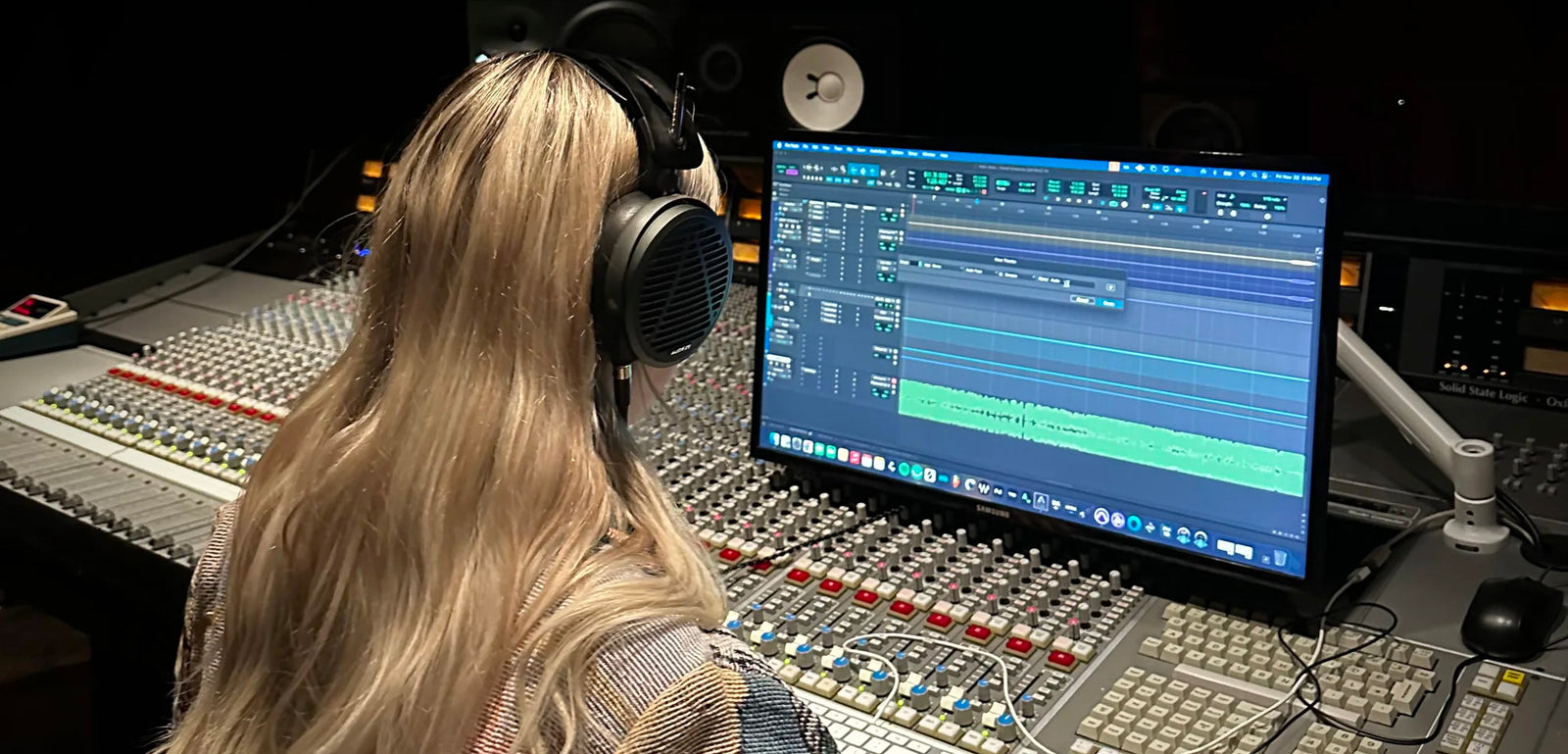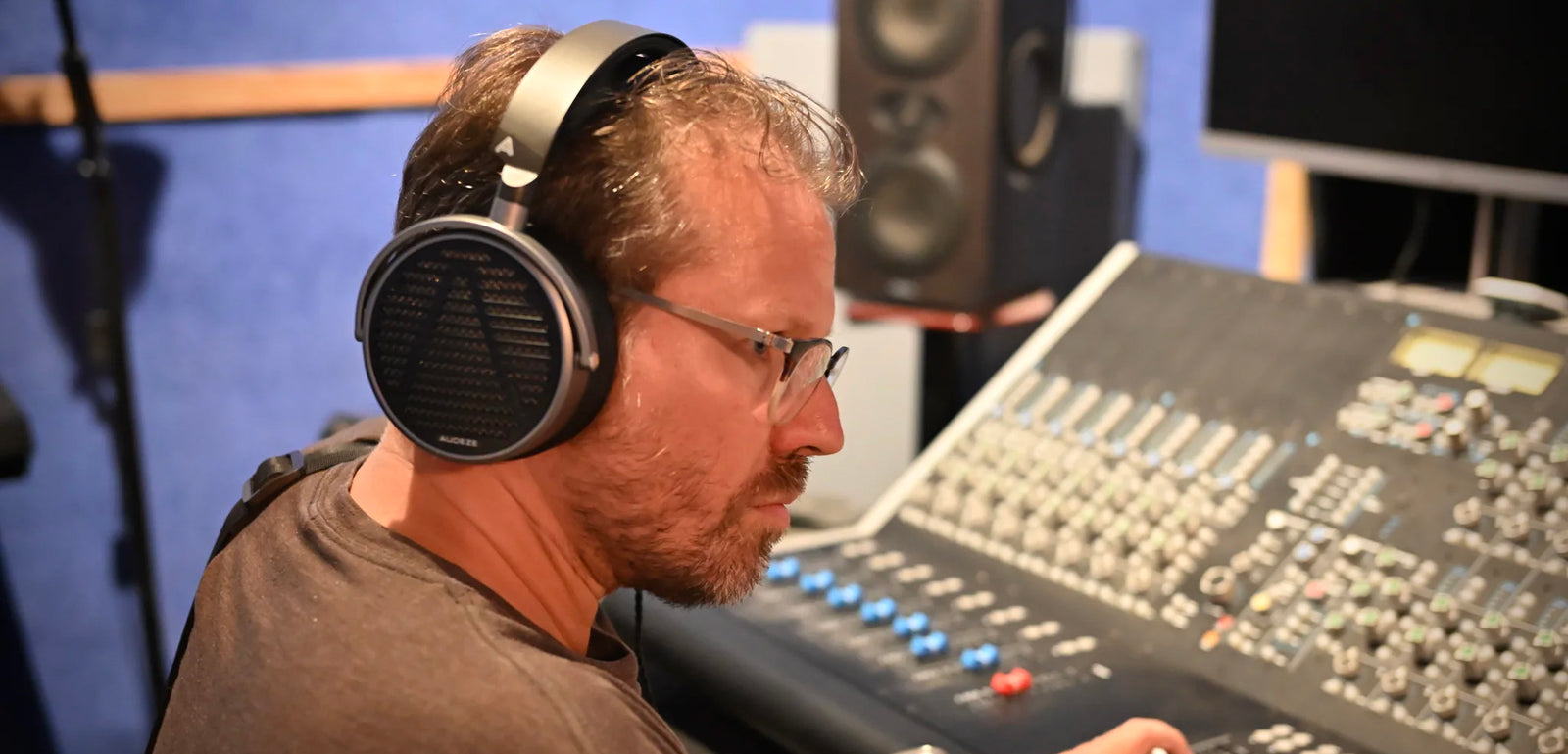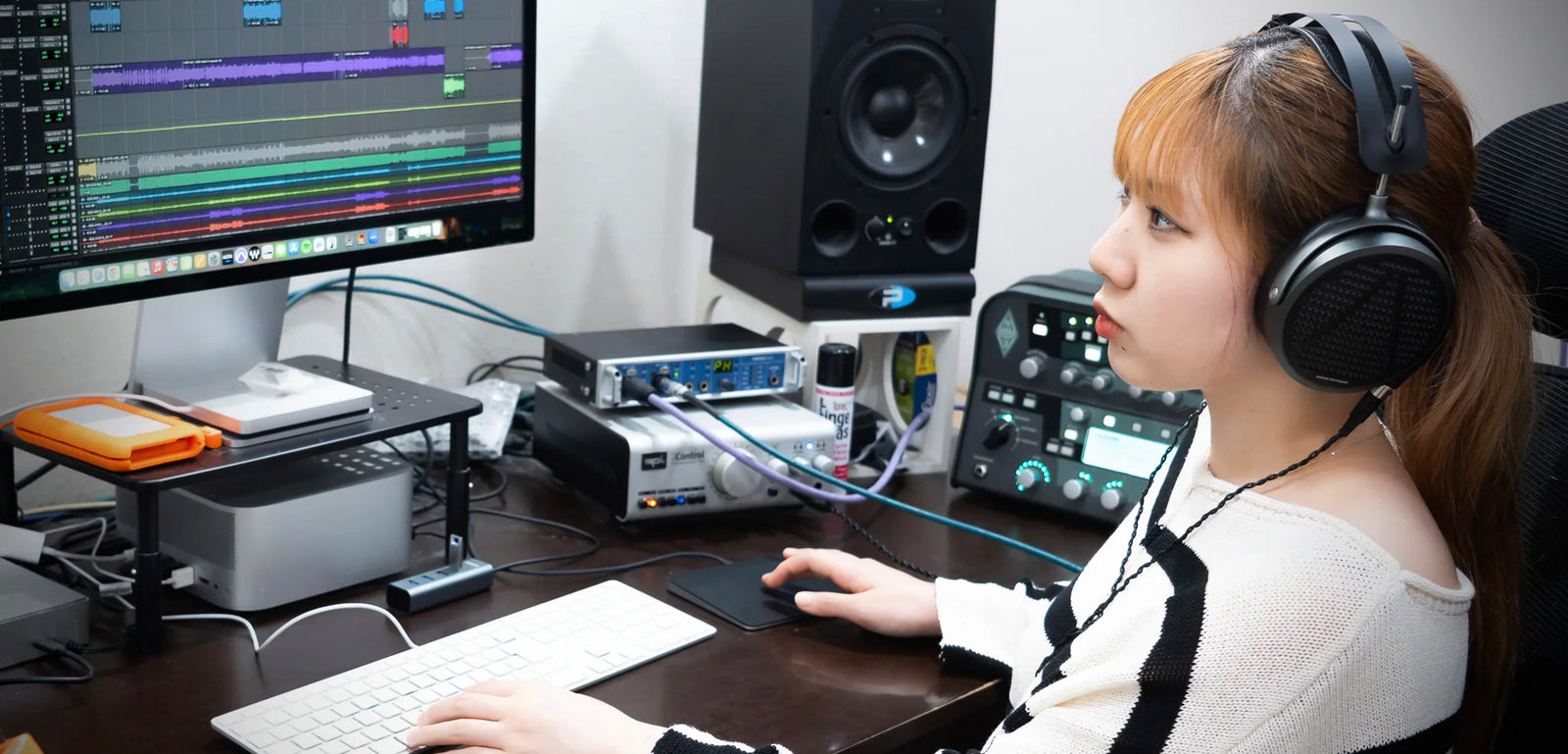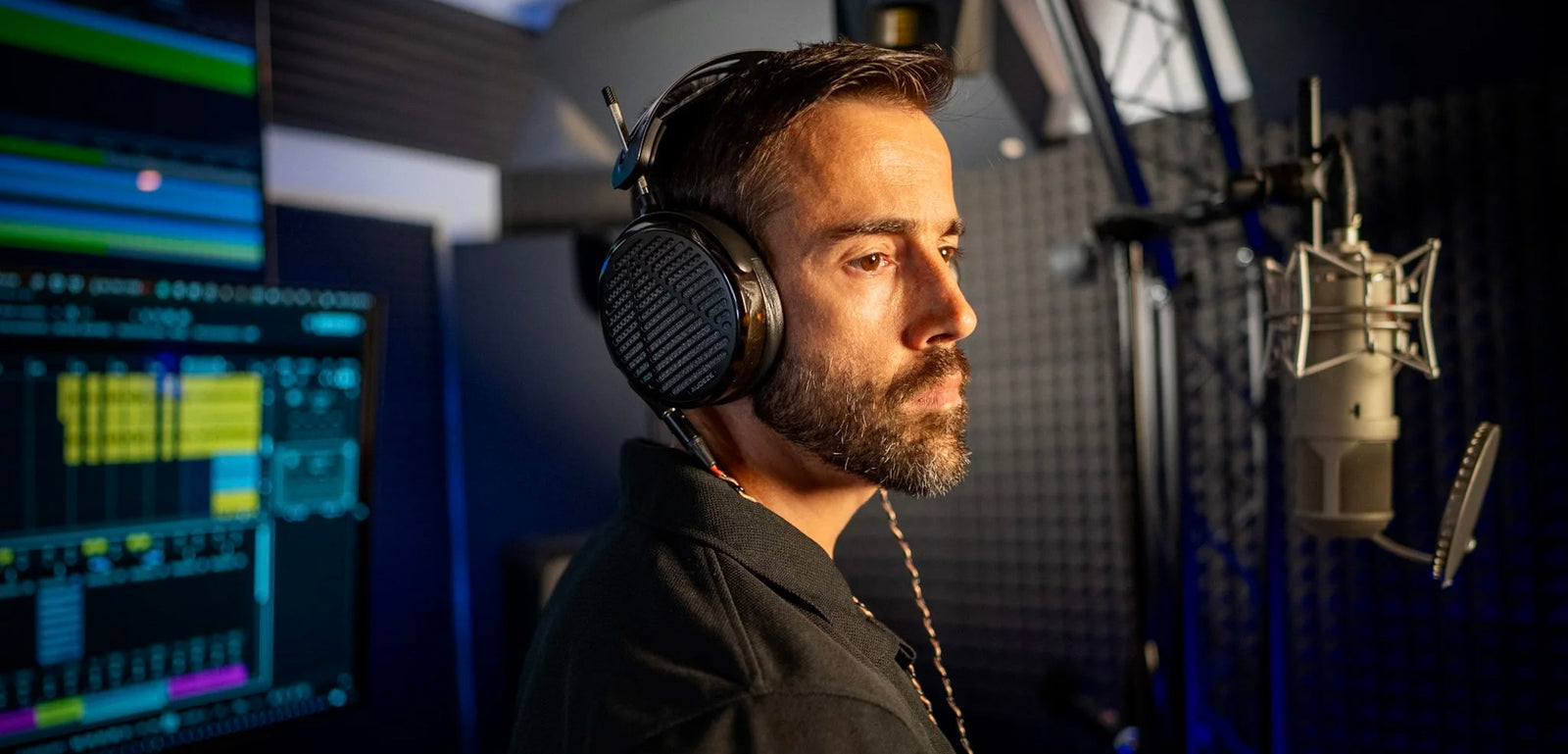
Angie Randisi is a highly acclaimed recording engineer and mixer from Canada, with three Grammy nominations and multiple platinum records to her name. Known for her technical prowess and keen ear, Angie has worked with some of the biggest names in the industry, including Lil Baby, Young Thug, Tory Lanez, 42 Dugg, Glorilla, and PartyNextDoor.

Josh Rogosin defined the tiny desk sound and has recorded and mixed over 800 shows, including Taylor Swift, Sting and Shaggy, Anderson .Paak, Mac Miller, Nile Rogers, and Bono and the Edge. His mixes have been heard on YouTube over a billion times. Now he’s introducing Global Sound and Ghost Light Concerts, traveling the world to discover how location inspires people to make music.

Li-sa-X is a Japanese female Guitarist/Composer who was born in 2005. Her cover video of RACER X's "Scarified," which she posted when she was 8 years old, garnered more than 5 million views and attracted a lot of worldwide attention. After watching this video, the composer of the song Paul Gilbert (MR. BIG) invited her to join his online guitar school as a scholarship student. She made her professional debut at the age of 12. Her playing technique has been described as “the future of rock."

Santaflow is an artist, composer, producer, entrepreneur, teacher and showman, politically incorrect and with millions of followers around the world (mainly in Spanish-speaking countries). After more than 20 years of career, he feels fitter and more eager than ever to continue creating songs and making them sound better every day. A restless lover of the world of sound, he works with several of the leading brands in the sector.
October 21, 2022
Frank Heath is a filmmaker and artist based in Brooklyn, NY. His video works contemplate vast, unfathomable subjects through a mix of observational documentary, landscape portraiture, droll humor, and prank phone calls. He has made solo exhibitions at Simone Subal Gallery, New York; Swiss Institute, New York; and Art Basel Statements, Basel. His work has been included in group exhibitions and screenings at the Kitchen, New York; International Film Festival
Rotterdam, the Power Plant, Toronto; Centre Pompidou, Paris; and the High Line, New York, among other venues. His film “The Hollow Coin” (2016) was awarded Best Documentary Short at Indielisboa and the Kurzfilm Hamburg Deframed Audience Award. Frank comes to Audeze through our mutual friend David Breskin.

In 2016 I made a short video called “The Hollow Coin" featuring the AT&T long lines building located at 33 Thomas St. in lower Manhattan. The work uses the windowless skyscraper as a significant location within a darkly absurd dialogue on surveillance, information leaks, and spontaneous combustion. Not long after I completed the film the same building was the subject of a report and short film “Project X” by Laura Poitras and Henrik Moltke. Their work used Snowden archive documents that revealed the building to be a key site (codename “Titanpointe”) in the NSA’s covert network of wiretapping rooms. Coincidentally, at the same time, the building was also used in the series Mr. Robot as the fictional location for the headquarters of “E Corp'', a villainous technological corporate overlord.
Several months later, as part of my exhibition “Blue Room” at Swiss Institute (which at the time was located just blocks from 33 Thomas St.) we organized a panel event on the history, revelations, and zeitgeist of 33 Thomas St. Miraculously, we were able to get Laura and Henrik, Lucy Teitler (a writer on Mr. Robot), and Addison Godel (an architectural historian who had written on the building) to participate. The event was held in the dark lighting of the exhibition with only a dim red light above the audience. It had the feel of an ominous, secretive conference in a bunker. My favorite part was the impromptu decision to order an ice sculpture in the likeness of the building that greeted visitors like an architectural model or centerpiece for the talk.
I usually work in a DIY style and handle most aspects of the process myself: writing, directing, cinematography, editing, and color/sound mix. Even just 10 years ago it was way more difficult to work independently this way but the technology and tools are much better and more accessible now which is very liberating. Generally speaking, the editing process is where I spend the most time and since I’m rarely working from a script it's also the place where the work is being discovered and sculpted, so I’d say that’s my predominant role or activity.
I started making still photos as a way to document pranks, at night, in the yards of my friends homes. These evolved to making interventions in the yards of strangers and other public spaces. Eventually, I started using video from a need to explore the dimension of storytelling that was lacking from just working in stills. From there things opened up to working with actors, and thinking more cinematically. Now I find myself working in the realm of documentary and doing a lot of traveling to investigate specific locations or architecture.
I didn’t set out to work in moving image, it just happened over time. I didn’t go to film school or work in that industry much along the way and I feel I’m still piecing it together as I go, mostly learning by doing. In hindsight, I’m surprised I didn’t work with video earlier because I’ve been obsessed with movies as long as I can remember. Sometime in high school a VHS copy of Eraserhead just about blew my head off and sent me on my way. This list might change depending on the day I’m writing it but here are a handful of other works that I’d count as direct influences: American Movie (1999), Chantal Akerman, “News From Home,” James Burke’s “Connections”, Joe Frank radio programs (especially the series “Karma”), Andy Kaufman TV appearances, Robert Smithson “Hotel Palenque.”
Three teachers: Renee Beggs, Patrick Clancy, and Lester Goldman each had a major impact on my artistic life. Renee was my high school art teacher and Patrick and Lester were two of my professors at the Kansas City Art Institute. All three of them were inspiring to me as creative thinkers as well as being great, unique people. I wouldn’t have gone to college or graduate school if it weren't for their mentorship and taking an active interest in me that went way beyond their job descriptions.
I often work with different actors to capture improvised conversations with people who don’t know they are being recorded. Some of the calls have been done in one or two attempts but others required many days of effort before something interesting happened. In the case of “War Pigeon” (2017), we spent days trying to catch fire and it wasn’t coming together. Something was missing from the ending and I was about to give up and make due with what we had. Finally, we connected with employee “Gene” from Arkansas and late in the conversation he teed us up with an opening to ask him about himself and his own workplace. It was a self-referential moment I had not considered should be part of the conversation. We immediately saw a connection with a subject of the story (Tower 270, the location of the first offices used in The Manhattan Project) and the character in the call who was questioning the moral quandary of scientists who worked on the atomic bomb but later renounced their participation. Somehow I had not anticipated that this would overlap so literally with Gene speaking about his own job and give us the closure I was looking for. This attempt at completing a circuit of reference points through chance is something I’ve been more cognizant of the last few years and actively trying to cultivate. I rewind to that moment when I get into a pickle and it reminds me to slow down, zoom out to the big picture, and open myself to receive things that I didn’t plan for.
Despite how much camera, computer, and audio equipment I use, my favorite piece of gear from the last few years is an IBM Selectric III typewriter (brown) purchased from and serviced by Queens Typewriter Corp. in Maspeth, NY.
“Never stop chasing” - Reed Timmer (meteorologist and storm chaser).
Unless I’m out in the field, most of my time working is spent at my desk doing research or editing video. I share an office with my friend and frequent collaborator Jesse Wakeman. We have neighbors in the building. There are machine noises from a scrap yard nearby, workers shouting, and truck sounds coming in from the street. Consequently, I wear headphones about 80-90% of the time I’m there. They’re an essential piece of gear that I’m physically touching and using for hours everyday. I might be scrubbing through hours of footage or running over a particular sound edit repeatedly and the headphones give me the isolation I need to focus on the mix and also prevent Jesse from going insane. I’m also constantly listening to music or watching movies while I work and for that I love the immersiveness and detail of headphones.
The detail and staging of the LCD-XC's are unlike anything else I've experienced in a pair of headphones. Working with them I feel much more confident in the precision of my sound edits and decisions about where things sit in the mix. The experience, however, does not feel technical or clinical but incredibly dimensional and affecting. I'm currently working on what I've been calling a "landscape horror" film on the coal mining town of Centralia, Pennsylvania where, in 1962, a fire in the town dump ignited a subterranean coal vein. Over the following decades the town was almost entirely evacuated and erased because of the inextinguishable fire, which continues to burn to this day. The work's score is the album "Ancient Songs of Burlap Heroes" by Nate Wooley's Columbia Icefield. Editing the film using the LCD-XCs has been incredibly helpful, and an absolute pleasure, in attempting to tune into and edit in response to the most subtle changes and spatial movements in the music.
